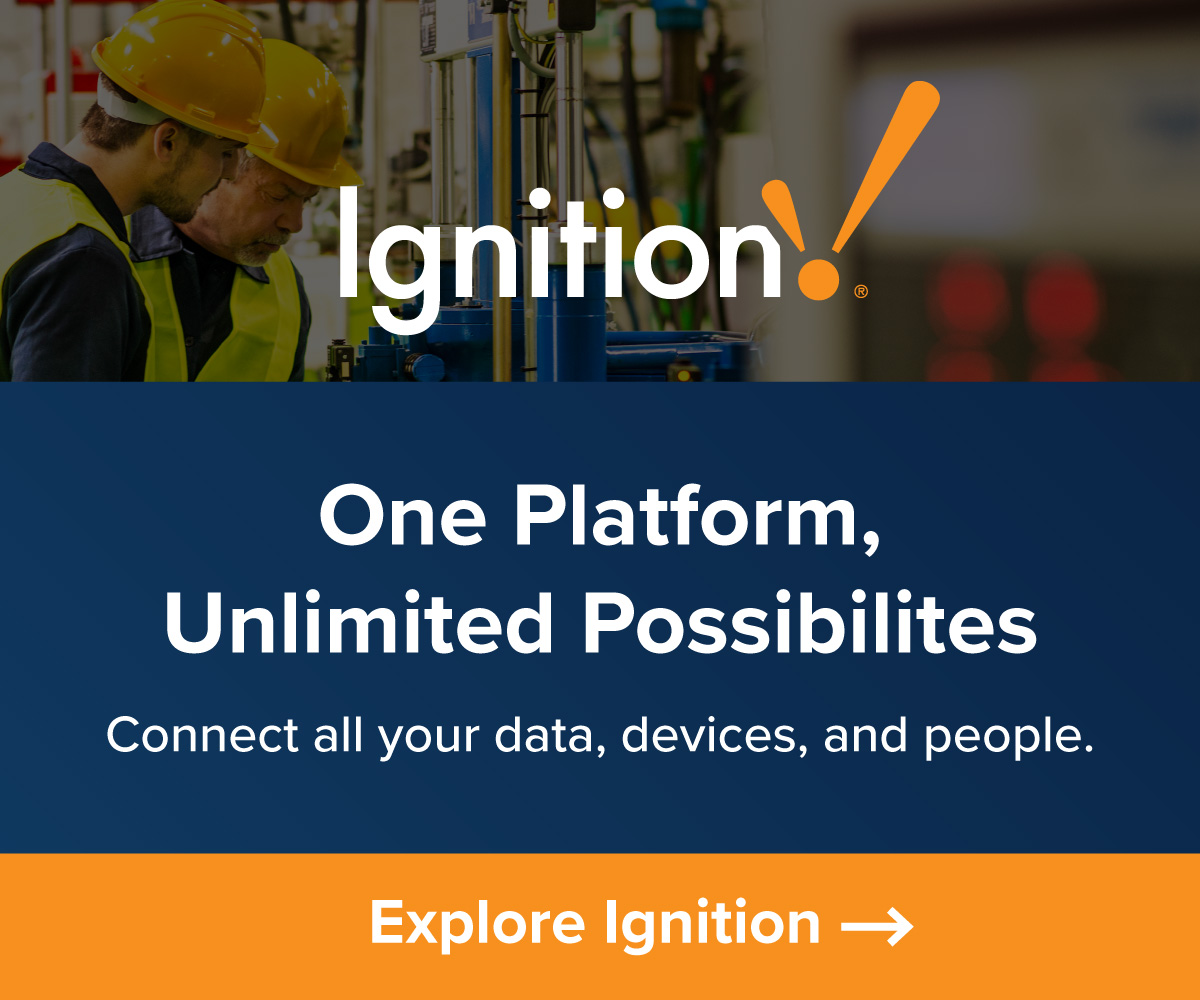by Gary Mintchell | Mar 17, 2025 | Embedded Control
Festo never ceases to amaze me with their pneumatics advances. Here introducing digital closed-loop control.
Festo introduces Controlled Pneumatics, a digital closed-loop control strategy for delivering energy efficiency, high dynamic response, and precision movement. Controlled Pneumatics is an ideal solution for web tensioning; welding; surface processing; flexible gripping, including vacuum gripping; dispensing and pumping; PET bottle blowing; and diaphragm pump control.
Controlled Pneumatics lowers compressed air usage by up to 50%. The reduction in energy improves the sustainability of the operation by lowering carbon dioxide (CO2) emissions from electricity generation. Precise proportional pressure control also conserves gases used in food and beverage, chemical, and semiconductor processing applications.
Controlled Pneumatic systems are composed of digitally controlled proportional pressure regulators, sensors, high-speed communications, and control algorithms. Controlled Pneumatics proportional pressure regulators feature piezoelectric valves, a technology Festo has been applying for decades and now mass produces.
Piezoelectric valves consume 95% less energy than solenoid valves. Piezoelectric valves open proportionally for precision control of pressure and flow and are fast acting for highly dynamic applications. Closed-loop control of these valves ensures an accurate, stable, and linear flow rate – without hysteresis. Repetition accuracy is rated at +/-0.25% of setpoint. Piezoelectric valves do not generate heat and can be densely packed. Low friction prolongs service life. These valves have a peak particle size per switching cycle of 0.1 μm, which is about five times smaller than proportional pressure regulators that do not use piezoelectric valves. These valves operate silently.
The Festo Controlled Pneumatics product range includes the VPPI proportional pressure regulator for high flow rate applications. The VTEM motion terminal is used for multi-channel control of large and small workpieces. The VEAB low flow rate proportional pressure regulator is designed for highly precise applications. The VTEP is a compact valve terminal for multi-channel low flow rate pressure control. It features high precision and dynamic response. These proportional pressure regulators can be used in addition with solenoid valves for hybrid functionality. The VEAB is a proportional pressure control valve for pressure ranges up to 6 bar. The VEFC is a compact mass flow controller for inert gasses.
Festo offers control algorithms to operate the VTEM Motion terminal, including:
- Flow control
- Selectable pressure level
- Positioning over the entire stroke of the cylinder
- Preset travel time
- Operating actuators with minimum pressure
- Leakage diagnostics
- Soft stop
- Model-based proportional pressure regulation (no need for external sensors)
- Proportional pressure regulation – two pressure regulators per valve slice at the two valve outlets that can be used to regulate pressures independently of each other, including vacuum.
These algorithms can be downloaded as apps on demand for the VTEM motion terminal.
Case studies:
A silicon wafer manufacturing plant applied Controlled Pneumatics to its Nitrogen gas (N2) purge application. Controlled Pneumatics cut N2 flow rate for oxygen flushing by 75%. For every 1,000 nitrogen purge systems, the plant saved $163,000 (U.S. dollars) in lower energy costs. The reduced energy lowered CO2 emissions from energy generation by 1,045 metric tons. In other words, Controlled Pneumatics removed CO2 emissions equivalent to burning 1.2 million pounds of coal.
At a tire manufacturing plant, small pneumatic cylinders were used to apply various tread patterns, depending on the layer of rubber being applied. These cylinders had to be precisely controlled in a pressure range of 0.05 to 8 bar. Previously, a proportional valve was used for each individual pressure zone in this application. The multi-channel VTEM motion terminal reduced valve slices by 50%. For the application’s control algorithm, the plant used model-based control for proportional pressure, which did not require external sensors.
by Gary Mintchell | Feb 12, 2025 | Embedded Control
The last real-time operating system briefing for me had to have been more than a decade ago. I’m passing this along as an interesting take. RTOSX develops real-time operating systems (RTOS) and middleware. It bills its RTOSX Kernel as the “industrial grade alternative to Eclipse Thread X. RTOSX has achieved certification for functional safety.
In brief: Certification accelerates compliance with IEC 61508, IEC 62304, ISO 26262, and EN 50128 functional safety standards for automotive, industrial, and medical industries.
RTOSX, a global leader in high-performance real-time operating systems and middleware, today announced the off-the-shelf functional safety certification of RTOSX KERNEL — the industrial-grade alternative to Eclipse ThreadX. Developers using RTOSX KERNEL leverage the RTOS certification artifacts to save time and money during application certification for safety-certified devices in the automotive, industrial, and medical industries. The RTOSX KERNEL certifications were performed by SGS-TÜV Saar, the leading accredited, independent company for testing, auditing, verifying, and certifying embedded software for safety-related systems. The RTOSX KERNEL achieved functional safety certification to the highest levels of the IEC 61508, IEC 62304, ISO 26262, and EN 50128 functional safety standards, specifically IEC 61508 SIL 4, IEC 62304 Class C, ISO 26262 ASIL D, and EN 50128 SW-SIL 4.
RTOSX KERNEL is the industrial-grade alternative to Eclipse ThreadX. Derived from the latest Eclipse ThreadX release, it is completely refactored and infused with unique technology from PX5 RTOS, including Pointer/Data Verification (PDV) and central error handling. RTOSX KERNEL is 100% API and functionally compatible with standard ThreadX, fully preserving its small memory footprint, full multithreading, and hard real-time functionality. Existing ThreadX-based applications require no modification when moving to RTOSX KERNEL. The RTOSX KERNEL includes full development tool support, source code, and royalty-free licensing.
by Gary Mintchell | Dec 11, 2024 | Automation, Embedded Control, Technology
Ah, AI. It’s everywhere. Often the wrong questions are asked and answered in general and tech media. The real question is what problem will it solve—and how well.
This news comes from Copia Automation who attempts to solve the problem of how controls engineers write, manage, and document industrial code.
As the first step in Copia’s vision of integrating AI into industrial automation, Copia Copilot enhances productivity, efficiency, and quality by automating routine coding tasks, simplifying complex processes, and equipping industrial workers with the tools they need for successful knowledge transfer and onboarding.
Core Capabilities
- Code documentation: Automatically create well-structured, clear documentation for PLC and other industrial code, reducing manual effort and ensuring consistency.
- Code translation: Seamlessly convert between Ladder Logic and Structured Text, making it easier to work across different programming languages.
- Code summarization: Quickly understand what a set of code does by asking the Copilot to explain it.
- Code modification: Improve, format, or troubleshoot existing code, allowing engineers to streamline their workflows and enhance code quality.
- New code generation: Generate boilerplate routines and custom code blocks for common automation tasks, saving time and accelerating development cycles.
- File referencing: Easily reference PLC project files from Copia repositories for more accurate and context-aware AI outputs.
Copia Copilot is currently available as part of an Alpha release, with plans to expand its functionality and reach in the coming months.
by Gary Mintchell | Jun 10, 2024 | Automation, Embedded Control, Motion Control, Robots
Once motion control systems, robot systems, and logic control systems existed as if on two different planets. Technology developers slowly began integrating motion control into their PLC platforms until today no one would acquire a PLC that cannot integrate motion.
Several years ago Rockwell Automation announced a robot control platform integrated into its control platform. And ABB/B+R and several others. Many robot applications readily lend themselves to integration into overall machine control.
Samantha Mou writes for Interact Analysis, one of the few analyst firms I find interesting. Based in China, she has written a good piece about Siemens’ announcements around Hannover Messe.
Just before Hanover Messe, Siemens announced its cooperation with two collaborative robot vendors, UR and JAKA. This will enable Siemens PLCs to control robots from UR and JAKA through the TIA Portal using the ‘Standard Robot Command Interface (SRCI)’ function. Prior to this, Siemens was already working in cooperation with Comau, Stäubli, Kawasaki and Yaskawa in integrated robot control via SRCI. A series of other leading robot brands, such as ABB, KUKA, FANUC, Epson and Techman, are also scheduled to come on board, and some other well-known Japanese and Chinese suppliers are pending, including Yamaha and Estun.
This will mean that the most influential industrial robot and collaborative robot brands on the market will support integrated robot control, allowing their robots to be controlled by automation systems.
Currently, the integration of industrial or collaborative robots and machines generally uses communication networks. The robot and the machine utilize independent control platforms, and robot controllers are connected to the machine PLC via communication protocols to facilitate machine-robot coordination.
So, how do companies integrate the two?
The concept of machine-integrated robot control emerged in a bid to unify control of machines and robots. There are two main ways of doing this. One is to retain the robot-specific controller hardware. For example, Siemens’ method employs a PLC that supports SRCI functions to translate and merge the robots’ control instructions into the TIA Portal. This enables engineers to use Siemens’ development environment to control robots without using robot programming languages.
Another integration method is to eliminate the robot controller hardware and use an automation controller with motion control functions instead. Robot axes are regarded as components of the machine and can be controlled directly by the machine controller. Notable solutions using this method include Rockwell’s Unified Robot Control, B&R’s Machine-Centric Robotics, Schneider’s PacDrive, and Omron’s NJ501-R controller. In addition to robot mechanics coming from robot manufacturers, there are also many cases where machine builders or integrators build robot mechanics themselves.
Another example of labor shortage.
With the increasing adoption of robots and the continued shortage of experienced engineers, there is strong growth in the market’s interest in integrated robot control. Different types of relevant market players are trying to seize the opportunities and benefits offered by this technology.
You can read her complete analysis here.
by Gary Mintchell | May 17, 2024 | Automation, Cloud, Data Management, Embedded Control, Manufacturing IT, Networking
While at Automate 2024 I saw Travis Cox of Inductive Automation and Benson Hougland of Opto 22. It was tough seeing them since their booth was always packed. I wound up walking through the show and out into the corridor with them.
These two companies plus Cirrus Link (MQTT and Sparkplug) are perhaps the best partnership combination I’ve seen in my years reporting in this market. Ignition running on Opto’s Groov Epic platform with MQTT and Sparkplug as the communications architecture solve many customer problems.
Hougland told me that they are continuing to build out the Groov platform. And to watch for cool things coming.
Cox told me that the big thing to pay attention to right now from Inductive Automation is the integration with Snowflake (more below). He says the integration keeps improving.
Here is Cox describing the integration at the last Ignition Community Conference:
And well, we got all the community to participate, where they’re basically leveraging Ignition or Ignition Edge or potentially have a smart device that speaks MQTT Sparkplug and they’re gonna build a data model, publish that up to a Chariot broker that’s in the cloud. Real simple. Then we can use the IoT bridge for Snowflake by Cirrus Link and all that data from Sparkplug goes directly into the Snowflake database. We’re showing it on a dashboard within Ignition, but it’s going to Snowflake database as well. And we can easily go and query that data. And we went one step further and we’re actually showing the anomaly detection within the Data Dash. So we’ll do a demonstration of this in just a moment, but wanna show you just how easy it is for this solution. And it’s all something we could do right now. It’s very, very simple to get started with this whole thing.
What is Snowflake, you may ask. Here is Pugal Janakiraman from Snowflake speaking at ICC 2024:
Snowflake is a globally connected cloud vendor agnostic data platform. It’s one single managed service from Snowflake. We take care of security, we take care of governance, we take care of scalability. And after that, much more cool, your API of choice is still SQL. You don’t have to learn hundreds of new services. You continue to use SQL as a mechanism to leverage data which is present in Snowflake, whether it is around building dashboards or you want to build an AI and ML model or build inference around those models, you still use SQL as an API for doing that.
Snowflake is a cloud-native database. Data can still reside on-premise or it can reside in whatever is your cloud vendor of choice. You can run analytics without the data movement out there. So we provide that kind of collaboration mechanisms. We provide AI and ML-based analytics. This is how the journey started for us. Ignition on Edge with zero coding using Snowpipe Streaming API, send the data to Snowflake.
by Gary Mintchell | May 8, 2024 | Automation, Embedded Control, Software, Technology, Workforce
I received many releases regarding automation from Siemens resulting from the Hannover Messe last month. They presented them to assembled press, analysts, and blogger this week at Automate in Chicago. These are all pretty cool.
- Siemens Industrial Copilot with Generative AI
- Spatial Computing Electrical Training for Apple Vision Pro
- Simatic S7-1200 G2—a new generation of controller
Siemens Xcelerator: Scaling roll-out of generative AI with Siemens Industrial Copilot
- Siemens makes automation easy with the first generative AI-powered product for engineering in an industrial environment
- Siemens Industrial Copilot accelerates the generation of complex automation code, reduces development times, and increases productivity
- TIA Portal connection offers customers SCL code generation, customization of HMI visualization, and document search in natural language
- Available for download from the Siemens Xcelerator marketplace starting in summer 2024
The Siemens Industrial Copilot, the generative AI-powered assistant, is now seamlessly connected to the Totally Integrated Automation (TIA) Portal. This will enable engineering teams to find the right help topic and to generate a basic visualization and code faster for programmable logic controllers (PLC). As a result, they will be able to significantly reduce their workload and offload repetitive tasks to the Siemens Industrial Copilot. In addition, the engineering of complex tasks will become less susceptible to errors. This in turn reduces development times and boosts quality and productivity over the long term. The Siemens Industrial Copilot for TIA Portal Engineering will be available for download from the Siemens Xcelerator marketplace starting in summer 2024.
Siemens and BILT Launch Spatial Computing Electrical Training for Apple Vision Pro
- Siemens leverages BILT on Apple Vision Pro to provide immersive step-by-step guided instruction for electricians
- BILT becomes newest Siemens Xcelerator Ecosystem partner
- BILT spatial computing app on Apple Vision Pro available at Hannover Messe tradeshow
Siemens and BILT, the creators of 3D Intelligent Instructions, are optimizing their mobile guides into spatial models for Apple Vision Pro. As the need for skilled electricians and other trades grows, training the entering workforce, while up-skilling the existing one, is essential. Tools such as BILT on Apple Vision Pro provide a highly immersive and visual training experience that helps users not only learn faster, but safer.
Siemens’ first product assembly and installation guides available on BILT on Apple Vision Pro include Siemens Smart Infrastructure’s Class 14 NEMA motor starter, designed to control and protect motors applied in industrial processes, and the P5 Power Distribution Panel.
To further the partnership and accelerate applications globally, BILT will become the newest addition to Siemens’ Xcelerator Ecosystem and Marketplace. Siemens Xcelerator, an open digital business platform and powerful ecosystem of partners, is where industrial clients from around the world can look for solutions that suit their needs. As part of Siemens Xcelerator, BILT will now be available as a turnkey solution to accelerate digital transformation and learning easier, faster and at scale.
A new generation of controller with Simatic S7-1200 G2
- Simatic S7-1200 G2 will be available in winter 2024
- Key benefits include efficient motion control, flexible machine safety, increased performance, and seamless scalability
For the first time in ten years, Siemens is announcing a new generation of controllers, available in winter of 2024, at Hannover Messe 2024. The Simatic S7-1200 G2 controllers are part of the Simatic controller family.
The new controllers help bridge the worlds of operational technology (OT) and information technology (IT). The controllers’ high communication performance and efficient data processing increase production output. By connecting the controllers to IT systems, it is also possible to use advanced data analysis, for example in the cloud.
The new controllers are part of Siemens Xcelerator, allowing customers to benefit from the standardized engineering approach in the TIA Portal. The Simatic S7-1200 G2 controller generation enables customers to address major challenges, such as productivity, flexibility, and cost optimization.
The new range of controllers combines integrated motion control functionalities with space-saving and flexible machine safety solutions.
For example, the S7-1200 G2 controllers make it possible for machine builders to control multiple coordinated axes and simple kinematics. Customers experience increased performance capabilities thanks to improved processing power, dedicated communication performance and more memory, as well as Near Field Communication (NFC) functionality with in-app access to diagnostic, operational, and device data. Plain text diagnostic information about the entire programmable logic controller (PLC) station reduces machine downtime and gives users quick access to data.




